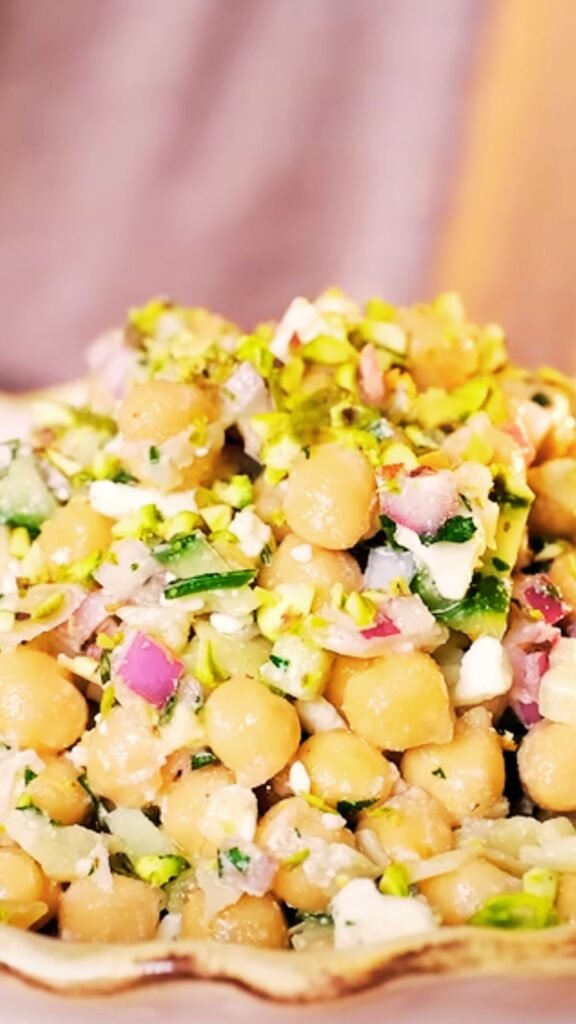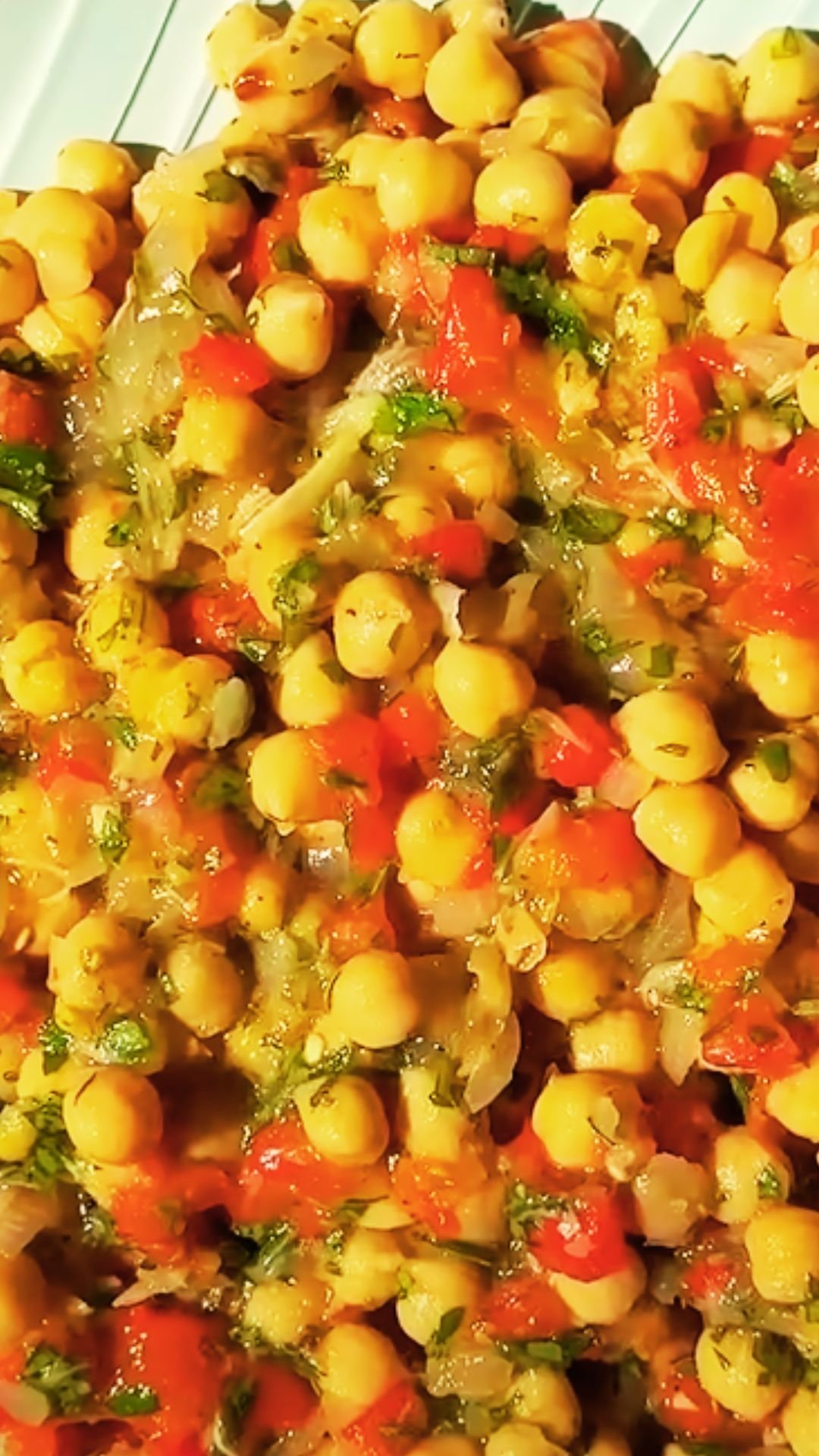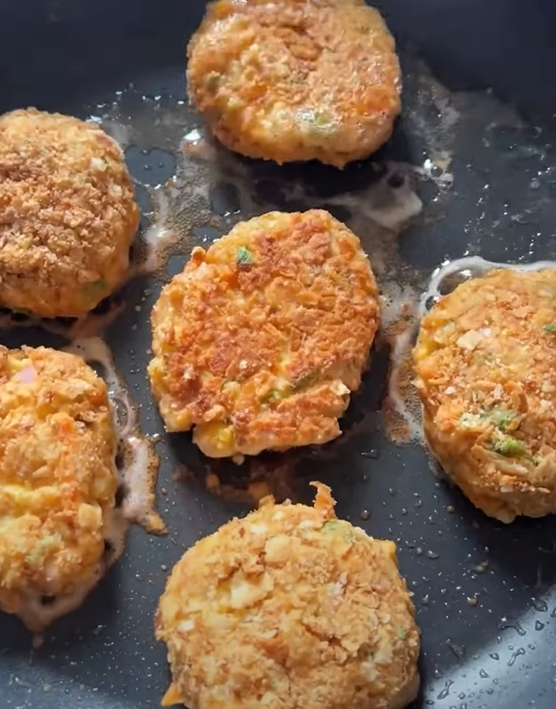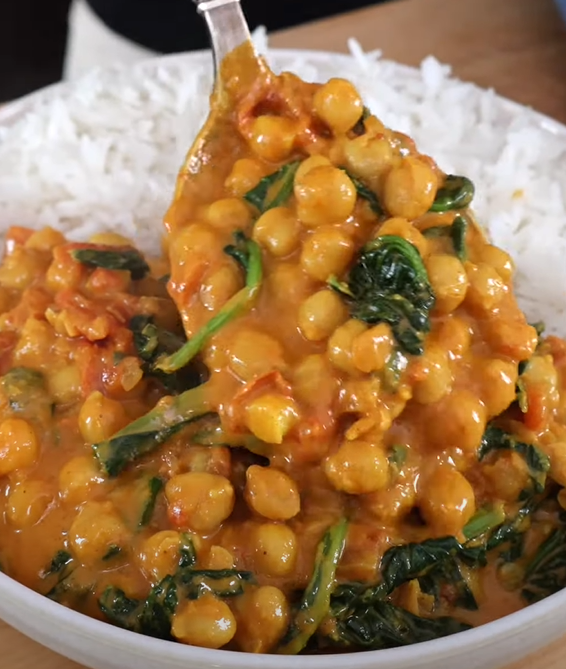I’ve been perfecting my garbanzo bean salad recipe for years, and I can honestly say it has become one of my go-to dishes for everything from quick weeknight dinners to impressive potluck contributions. There’s something magical about the way these humble legumes transform into a vibrant, satisfying meal that pleases both vegetarians and meat-lovers alike. Today, I’m sharing my comprehensive guide to creating the perfect garbanzo bean salad that will revolutionize your approach to healthy eating.
Garbanzo beans, also known as chickpeas, have been a cornerstone of Mediterranean and Middle Eastern cuisine for thousands of years. When I first discovered how versatile these protein-packed legumes could be in salad form, it opened up an entirely new world of culinary possibilities. The beauty of garbanzo bean salad lies not just in its exceptional nutritional profile, but in its incredible adaptability to different flavor profiles and dietary needs.
Understanding Garbanzo Beans: The Foundation of Great Salad
Before diving into my favorite recipes, let me share what I’ve learned about these remarkable legumes. Garbanzo beans are nutritional powerhouses that deserve a permanent place in every kitchen. They’re packed with plant-based protein, fiber, and essential minerals that support overall health and wellness.
Chickpeas (Garbanzo Beans): Round, beige legumes with a nutty flavor and creamy texture when properly prepared. Rich in protein, fiber, folate, and iron.
Canned vs. Dried: While I often use canned for convenience, dried garbanzo beans offer superior texture and flavor when you have time for proper preparation.
Texture Varieties: From firm and slightly grainy to smooth and creamy, depending on cooking method and preparation time.
The nutritional benefits of garbanzo beans have made them my preferred protein source for many meals. A single cup provides approximately 15 grams of protein and 12 grams of fiber, making them incredibly satisfying and supportive of digestive health.
My Signature Garbanzo Bean Salad Recipe
After countless experiments in my kitchen, I’ve developed what I consider the perfect base recipe that can be customized endlessly. This Mediterranean-inspired salad combines fresh vegetables, herbs, and a zesty dressing that brings everything together beautifully.
Essential Ingredients
My base recipe starts with these carefully selected components:
- 2 cans (15 oz each) garbanzo beans, drained and rinsed
- 1 large cucumber, diced into small cubes
- 2 medium tomatoes, chopped and deseeded
- 1/2 red onion, finely minced
- 1/2 cup Kalamata olives, pitted and halved
- 1/2 cup fresh parsley, chopped
- 1/4 cup fresh mint, chopped
- 4 oz feta cheese, crumbled
The Perfect Dressing
The dressing makes all the difference in elevating this salad from good to extraordinary:
- 1/3 cup extra virgin olive oil
- 3 tablespoons fresh lemon juice
- 2 cloves garlic, minced
- 1 teaspoon dried oregano
- 1/2 teaspoon ground cumin
- Salt and freshly ground black pepper to taste
Step-by-Step Preparation
My method ensures maximum flavor development and perfect texture:
- Prepare the beans: I always rinse canned garbanzo beans thoroughly under cold water and pat them dry with paper towels. This removes excess sodium and prevents the salad from becoming watery.
- Prep vegetables uniformly: I dice all vegetables to roughly the same size, about 1/4 inch, which ensures every bite has balanced flavors and textures.
- Create the dressing: In a small bowl, I whisk together olive oil, lemon juice, minced garlic, oregano, and cumin until well emulsified.
- Combine thoughtfully: I add the garbanzo beans to a large mixing bowl, followed by vegetables and herbs. I pour the dressing over everything and toss gently but thoroughly.
- Rest for flavor development: The salad benefits from at least 30 minutes of refrigeration before serving, allowing flavors to meld beautifully.
Nutritional Analysis and Health Benefits
Understanding the nutritional impact of this salad has reinforced why I make it so frequently. The combination of ingredients creates a perfectly balanced meal that supports various health goals.
| Nutrient | Per Serving (1 cup) | Daily Value % | Health Benefits |
|---|---|---|---|
| Protein | 12g | 24% | Muscle maintenance, satiety |
| Fiber | 8g | 32% | Digestive health, blood sugar control |
| Iron | 3.2mg | 18% | Oxygen transport, energy production |
| Folate | 145mcg | 36% | Cell division, DNA synthesis |
| Magnesium | 78mg | 19% | Bone health, muscle function |
| Potassium | 485mg | 14% | Heart health, blood pressure regulation |
| Vitamin C | 22mg | 24% | Immune function, collagen synthesis |
| Healthy Fats | 14g | 22% | Brain health, nutrient absorption |
The Mediterranean-style preparation method I use maximizes nutrient retention while creating flavors that make healthy eating genuinely enjoyable. The combination of plant-based protein from garbanzo beans with healthy fats from olive oil and olives creates a satisfying meal that keeps me energized for hours.
Creative Variations I Love
Over the years, I’ve developed numerous variations of my basic recipe to keep things interesting and accommodate different preferences and seasonal ingredients.

Mexican-Inspired Version
My Mexican twist incorporates:
- Black beans mixed with garbanzo beans
- Corn kernels and diced bell peppers
- Cilantro instead of parsley
- Lime juice and cumin-heavy dressing
- Avocado and jalapeños for extra flavor
Indian-Spiced Variation
This aromatic version features:
- Curry powder and turmeric in the dressing
- Diced mango and red bell pepper
- Fresh cilantro and mint
- Greek yogurt-based dressing
- Toasted cumin seeds for crunch
Italian-Style Approach
My Italian interpretation includes:
- Cherry tomatoes and fresh mozzarella
- Basil and oregano
- Balsamic vinegar dressing
- Pine nuts and sun-dried tomatoes
- Arugula for peppery greens
Advanced Preparation Techniques
Through extensive experimentation, I’ve discovered several techniques that elevate garbanzo bean salad from ordinary to exceptional.
Roasting for Enhanced Flavor
Sometimes I roast the garbanzo beans before adding them to salad. I toss drained beans with olive oil and spices, then roast at 400°F for 20-25 minutes until golden and slightly crispy. This adds incredible depth of flavor and interesting textural contrast.
Marinating Vegetables
For extra flavor penetration, I sometimes marinate diced vegetables in lemon juice and salt for 15 minutes before combining with other ingredients. This technique, which I learned from Mediterranean cooks, softens harsh flavors while maintaining crunch.
Herb Oil Preparation
Instead of simply chopping herbs, I sometimes create herb oils by blending fresh herbs with olive oil until smooth. This distributes herb flavors more evenly throughout the salad and creates a more professional presentation.
Storage and Meal Prep Strategies
One of the reasons I rely on garbanzo bean salad so heavily is its excellent keeping qualities and meal prep potential.
| Storage Method | Duration | Quality Notes | Best Practices |
|---|---|---|---|
| Refrigerator | 3-4 days | Maintains texture well | Store in airtight container |
| Freezer | Not recommended | Texture deteriorates | Fresh vegetables don’t freeze well |
| Room Temperature | 2 hours maximum | Food safety concerns | Keep chilled for serving |
| Lunch Prep | 5 days prepared | Excellent for meal prep | Dress just before eating |
Meal Prep Tips I Swear By
- I prepare all ingredients separately and combine just before serving to maintain optimal texture
- Dressing keeps separately for up to one week in the refrigerator
- I often double recipes since they store so well and make excellent leftovers
- Adding fresh herbs at the last minute preserves their bright flavor and color
Serving Suggestions and Pairings
The versatility of garbanzo bean salad makes it suitable for numerous serving scenarios. I’ve served this salad successfully in various contexts, from casual family dinners to elegant dinner parties.
As a Main Course
When serving as a complete meal, I often add:
- Grilled chicken or salmon for additional protein
- Crusty whole grain bread for carbohydrates
- Fresh fruit for a refreshing contrast
- Hummus and pita chips for Mediterranean authenticity
As a Side Dish
This salad complements numerous main courses:
- Grilled meats and seafood
- Roasted vegetables and grain bowls
- Pasta dishes and risottos
- Soup and sandwich combinations
For Special Occasions
I’ve successfully scaled this recipe for large gatherings:
- Potluck dinners and picnics
- Office lunch meetings
- Holiday buffets and barbecues
- Brunch spreads and casual entertaining
Troubleshooting Common Issues
Through years of making this salad, I’ve encountered and solved various challenges that home cooks often face.
Problem: Salad becomes watery after sitting Solution: I always drain vegetables thoroughly and add salt to draw out excess moisture before combining ingredients.
Problem: Flavors seem flat or boring Solution: I increase acid (lemon juice) and adjust seasoning. Fresh herbs added just before serving make a dramatic difference.
Problem: Beans taste bland Solution: I season the beans separately with salt and let them sit for 10 minutes before adding other ingredients.
Problem: Vegetables lose crunch Solution: I cut vegetables just before serving and store wet ingredients separately until the last minute.
Seasonal Adaptations
I modify my garbanzo bean salad throughout the year to take advantage of seasonal produce and accommodate changing weather preferences.
Spring Version
Fresh peas, asparagus, and baby spinach create a light, green-focused salad perfect for warmer weather. I use a lighter vinaigrette with fresh dill and lemon zest.
Summer Abundance
Peak tomato season calls for multiple varieties, fresh corn, and abundant basil. I often serve this version at room temperature for maximum flavor impact.
Fall Harvest
Roasted butternut squash, dried cranberries, and toasted pumpkin seeds create a heartier version suitable for cooler weather. I use apple cider vinegar and add warming spices.
Winter Comfort
Preserved lemons, pomegranate seeds, and hearty greens like kale create a satisfying cold-weather version. I often warm the beans slightly before combining with cold ingredients.
Cultural Context and History
Understanding the cultural significance of garbanzo beans has deepened my appreciation for this humble ingredient. These legumes have sustained populations across the Mediterranean, Middle East, and India for millennia, representing some of humanity’s earliest agricultural achievements.
In my research, I’ve learned that garbanzo beans were among the first crops cultivated in the Fertile Crescent over 10,000 years ago. This historical perspective adds meaning to every salad I prepare, connecting me to generations of cooks who understood the value of these nutritious legumes.
The modern popularity of garbanzo bean salads reflects growing awareness of plant-based nutrition and Mediterranean dietary principles. As someone who has embraced this approach to eating, I’ve experienced firsthand the benefits of incorporating more legume-based meals into my routine.
Frequently Asked Questions
Q: Can I use dried garbanzo beans instead of canned? Absolutely! I often prefer dried beans for their superior texture and flavor. Soak them overnight, then simmer for 1-2 hours until tender. The extra effort results in beans with better bite and less sodium.
Q: How long does garbanzo bean salad last in the refrigerator? In my experience, properly stored garbanzo bean salad maintains quality for 3-4 days. I store it in an airtight container and give it a gentle stir before serving. The flavors often improve after the first day.
Q: Can I make this salad ahead for a party? Yes, this salad is perfect for advance preparation! I often make it the day before serving. Just add delicate herbs and any crispy elements right before presenting to maintain optimal texture and appearance.
Q: What’s the best way to reduce the sodium content? I rinse canned garbanzo beans thoroughly and use low-sodium varieties when available. Making the salad from dried beans gives you complete control over sodium levels. I also use fresh lemon juice and herbs to enhance flavor without adding salt.
Q: Can I freeze leftover garbanzo bean salad? I don’t recommend freezing this salad because the fresh vegetables lose their texture and become mushy when thawed. However, you can freeze plain cooked garbanzo beans for up to 6 months for future salad preparation.
Q: How can I make this salad more filling? I often add quinoa, farro, or other whole grains to create a more substantial meal. Nuts, seeds, and additional protein sources like hard-boiled eggs or cheese also increase satiety without compromising the salad’s fresh character.
Q: What substitutions work for people with allergies? For dairy-free versions, I omit cheese or use nutritional yeast for umami flavor. Lemon juice can replace vinegar for those avoiding fermented products. The beauty of this salad lies in its adaptability to various dietary needs.
Q: How do I prevent the salad from becoming too oily? I use a light hand with olive oil and always taste as I go. Starting with less dressing and adding more as needed prevents over-oiling. I also make sure vegetables are completely dry before dressing to prevent dilution.
This garbanzo bean salad has become much more than a recipe in my kitchen—it’s become a reliable foundation for creative, healthy eating. Whether you’re looking for a quick lunch, an elegant side dish, or a nutritious main course, this versatile salad adapts beautifully to your needs and preferences. The combination of protein, fiber, and fresh vegetables creates satisfaction that lasts, while the Mediterranean flavors make healthy eating genuinely enjoyable. I encourage you to start with my basic recipe and then experiment with your own favorite ingredients and flavor combinations. The possibilities are truly endless when you have this foundation to build upon.



